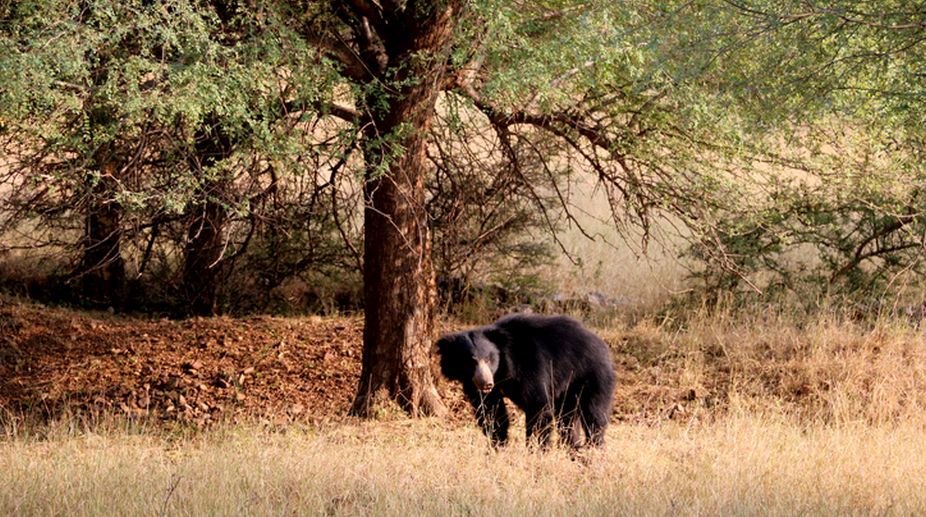Two back-to-back earthquakes jolt Kashmir Valley
Two back-to-back earthquakes measuring 4.9 and 4.8 on the Richter scale occurred in the Kashmir Valley on Tuesday.
Official data from Kashmir revealed that 124 black bears and 44 leopards perished between 2012 and 2020. The conflicts between people and animals contributed to several of these fatalities. At least 242 individuals have died and 3,528 people have been injured in this human-animal war in Kashmir over the past 14 years (from 2006 to 2020).

Representative Image (Photo: Getty Images)
The human-animal conflict is being reported daily throughout the Kashmir valley, and numerous individuals, mostly youngsters, have died as a result of this fight. The conflict has resulted in about 250 fatalities and 2,950 injuries from 2006 to 2022. The utilisation of land in Kashmir, which is surrounded by both plains and mountains, has witnessed highly dramatic changes.
Apple orchards have mostly replaced large paddy fields in these areas. Forests and marshy areas have become the locations of new neighbourhoods. The resultant deforestation has contributed to climate change.
Advertisement
Data shows that the human-animal conflict in the Kashmir Valley resulted in 18 fatalities and 134 injuries in 2006-2007.
Advertisement
In 2007-2008, there were 141 injuries and 15 fatalities. 22 individuals lost their lives and 193 were hurt in 2008-2009. Human-animal confrontations resulted in 20 deaths and 232 injuries in 2009–10 and 24 deaths and 306 injuries in 2010–11, according to the statistics.
According to studies published by Indian Forester, when humans live near or in the woods, there would often be conflicts with wild animals. Additionally, it has been discovered that the proximity of human settlements to water sources increases the number of conflict situations.
Official data from Kashmir revealed that 124 black bears and 44 leopards perished between 2012 and 2020. The conflicts between people and animals contributed to several of these fatalities. At least 242 individuals have died and 3,528 people have been injured in this human-animal war in Kashmir over the past 14 years (from 2006 to 2020).
Bear assault
The bear is the species that has been responsible for most of the human-animal conflicts followed by leopard, monkey and red fox assaults. Human encounter with animals other than bear has been less frequent and less fatal. A research “Victims of human-wildlife conflict in the Kashmir Valley, a neglected type of trauma” revealed this. Leopard attacks had the highest mortality rate.
Last year, a 50-year-old nomad perished in the Harwan region outside of Srinagar in a bid to rescue his younger brother from the assault of a black bear. In the assault, his sibling also sustained injuries.
According to experts, these encounters are the result of the wild animals moving closer to populated areas in search of food and shelter which has significantly increased the number of assaults.
The wild animals quite often harm cattle and destroy crops and thereby inflicting financial losses on locals. According to findings, leopards and black bears can adapt to any environment and attack humans.
A research work published in the International Journal of Research in Medical Sciences indicates that the best strategy to prevent human-animal conflict is to maintain ecological equilibrium.
Animals consuming plastic
According to a Wildlife SOS research on brown bears in Kashmir, these animals eat garbage-derived food such as plastic bags, milk powder, biryani, and toffee wrappers. The nutrition of the brown bear was thoroughly examined by the Wildlife SOS team. The findings showed that 86 out of the bears had plastic bags, powdered milk, and chocolate coatings in their feces out of, around 400 bears
Advertisement